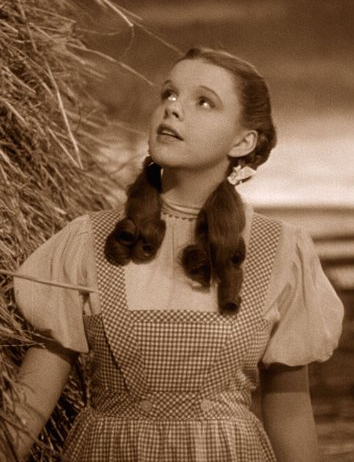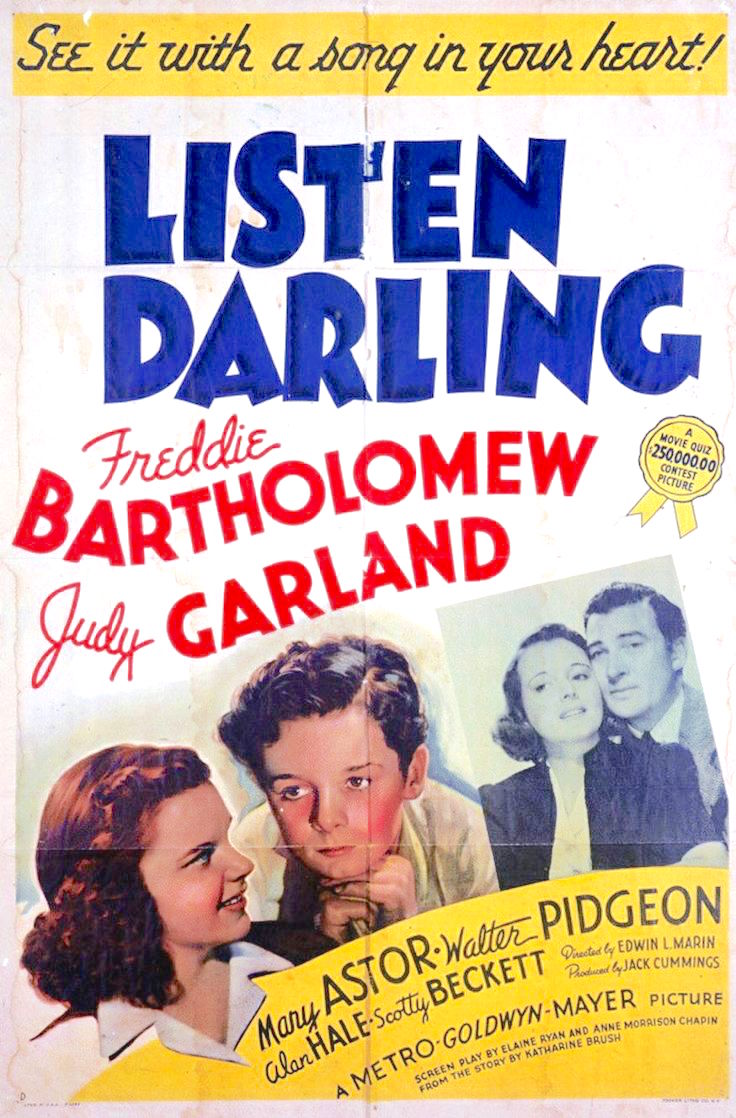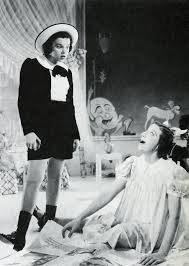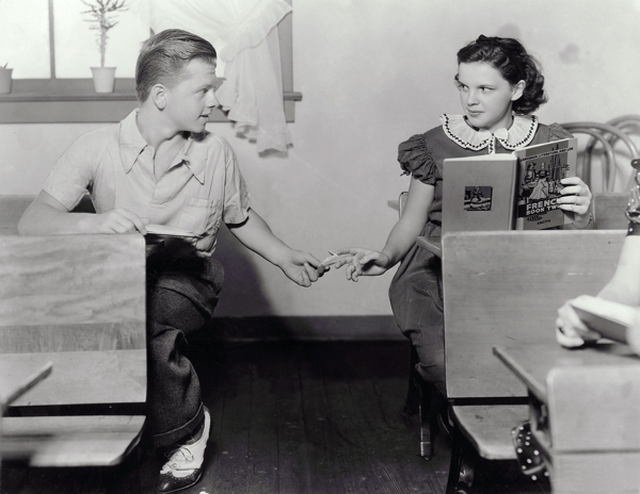Judy by the Numbers: "Over the Rainbow"
 Wednesday, March 2, 2016 at 8:00AM
Wednesday, March 2, 2016 at 8:00AM
Anne Marie is tracking Judy Garland's career through musical numbers…
 How do you talk about this movie? How do you talk about this song? Sure, there are star-turns. There are underdog stories. But there is nothing in Hollywood legend so powerfully wedded as Judy Garland and The Wizard of Oz. It's the kind of lightning-in-a-bottle marriage of star and song that comes once every couple of generations. This was the number that would define Judy Garland as she defined it. It would be her biggest hit; one she recorded and re-recorded. It would follow her throughout her career, and outlive her when she died. Every moment before and after in the story of Judy Garland, MGM, and Studio System Hollywood lives in the shadow of "Over The Rainbow."
How do you talk about this movie? How do you talk about this song? Sure, there are star-turns. There are underdog stories. But there is nothing in Hollywood legend so powerfully wedded as Judy Garland and The Wizard of Oz. It's the kind of lightning-in-a-bottle marriage of star and song that comes once every couple of generations. This was the number that would define Judy Garland as she defined it. It would be her biggest hit; one she recorded and re-recorded. It would follow her throughout her career, and outlive her when she died. Every moment before and after in the story of Judy Garland, MGM, and Studio System Hollywood lives in the shadow of "Over The Rainbow."
The Movie: The Wizard of Oz (MGM, 1939)
The Songwriter: Harold Arlen (Music & Lyrics)
The Players: Judy Garland, Margaret Hamilton, Billie Burke, Frank Morgan, Ray Bolger, Bert LahJack Haley, directed by Victor Fleming
The Story: Louis B. Mayer did not take gambles. When he bought the rights to The Wizard of Oz, he wanted it to be the biggest, most expensive, most profitable musical in MGM’s history. Mayer started by assembling the best talent he had: producer Arthur Freed, director Victor Fleming, a cast of A-list comedians, and that no-fail, bonafide box office guarantee, Shirley Temple. By the time production was underway, 9,000 extras were dancing past cutting-edge special effects played on 65 sets built on all 29 MGM soundstages, totaling in a budget just under $2 million.
Of course, Fox wouldn’t release its tiny tapdancer, so Mayer had to resort to his second choice: Judy Garland. Since she was the new star of MGM’s biggest film, Judy’s studio education was put into high gear. Her teeth were capped, her hair was dyed, she was enrolled in dance and poise classes; all designed to polish down the rest of her rough edges. What this regimen couldn’t do was dull what made Judy unique.
Judy singing “Over The Rainbow” is the perfect distillation of star and studio power. She’d shown signs before of what would make her great - vocal power in “Americana,” joyful musicality in “Got a pair of New Shoes,” deep longing in “Dear Mr. Gable,” - but with “Over The Rainbow,” the rest of the pieces fall into place. Judy loses her adolescent awkwardness, though she keeps her deep yearning. Accustomed to lip synching, she is able to act throughout the song - wistfulness, sadness, restlessness, hope. Judy Garland wasn’t even old enough to vote, but a combination of raw talent and rigorous training matured her into an exemplary performer.
previously: "The Land of Let's Pretend" (1930), "The Texas Tornado" (1936), "Americana" (1936), "Dear Mr Gable" (1937), "Got a New Pair of Shoes" (1937), "Why? Because!" (1938), "Inbetween" (1938), “Zing Went the Strings of My Heart” (1938)






